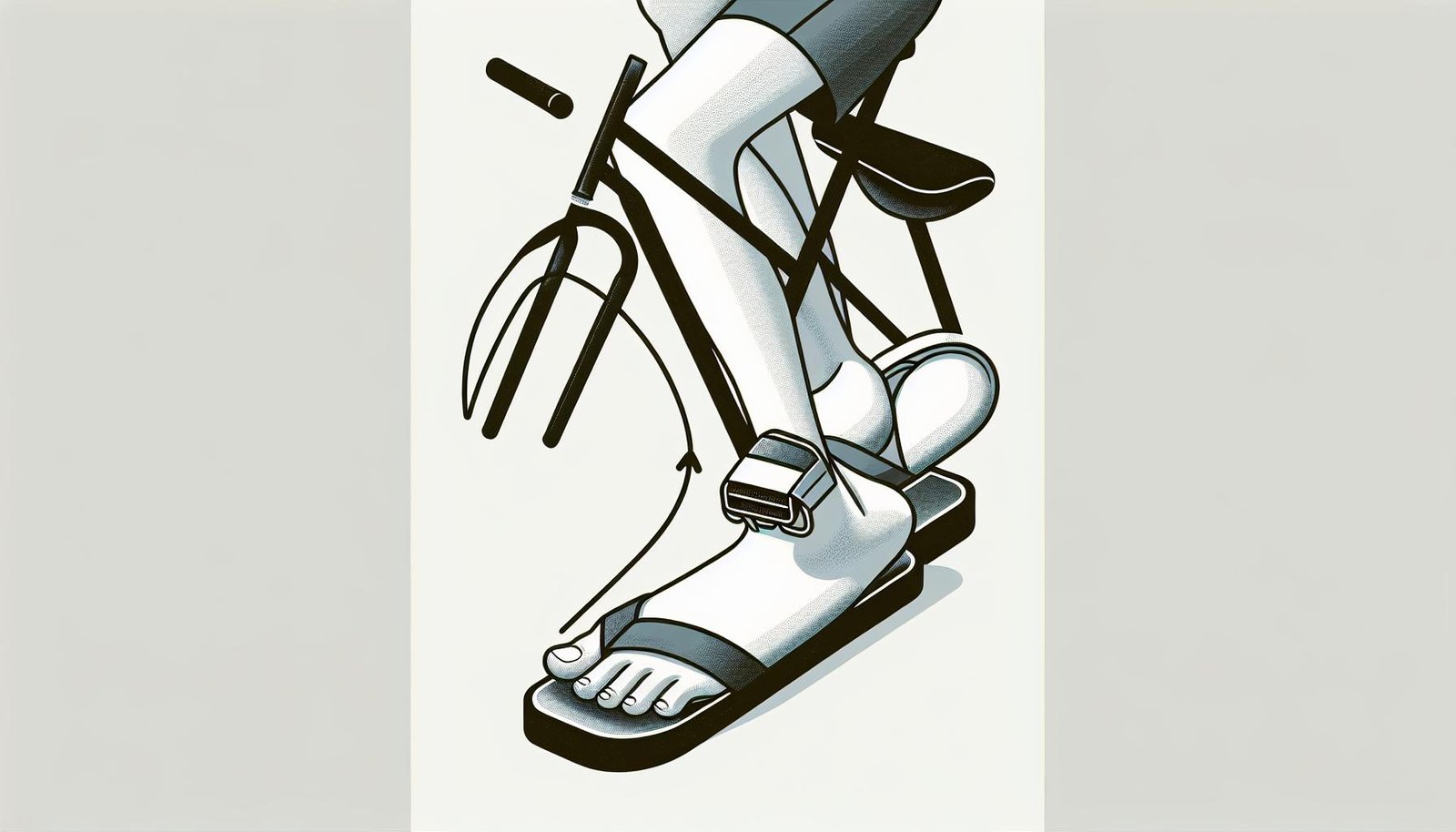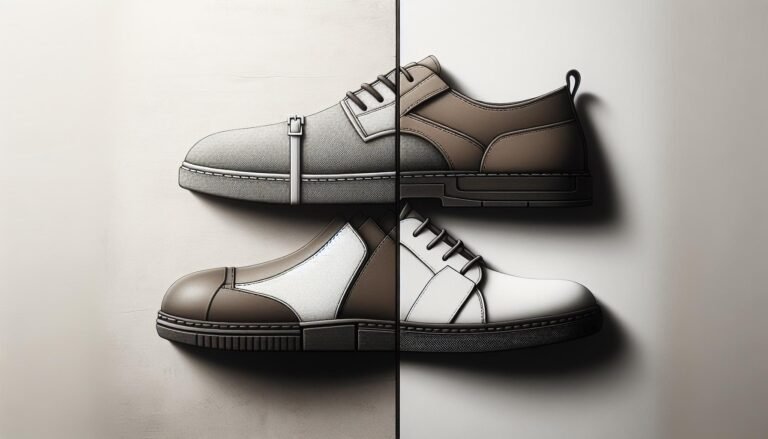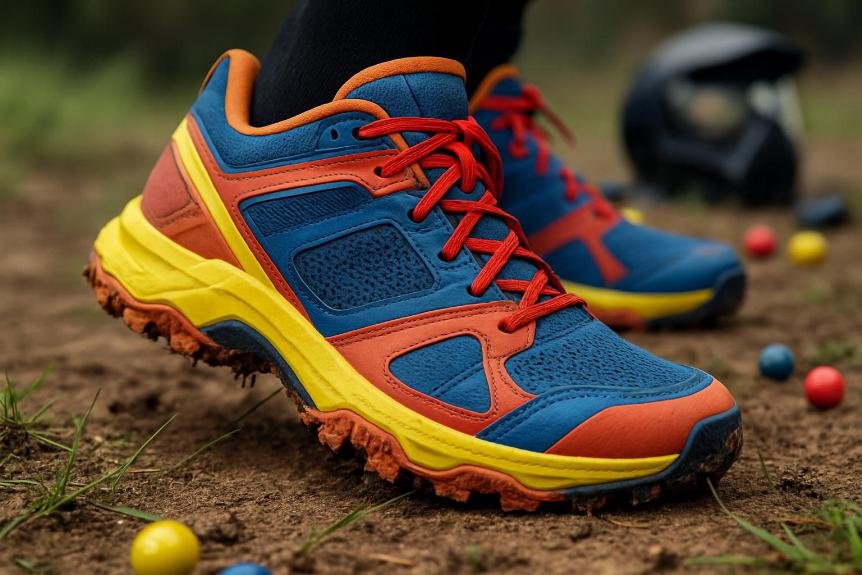Can You Legally Ride a Bike in Slippers?
When I first considered the idea of biking with slippers, it struck me as a question many might not have pondered. Yet, it’s a topic that’s more relevant than you’d think, especially in areas where the sun never seems to take a day off. It’s all about finding that sweet spot between comfort and safety, but where does legality fit into this equation?
Navigating through the maze of traffic laws, I’ve discovered that the answer isn’t as straightforward as one might hope. Different regions have their own take on what’s considered safe attire for biking, and yes, that includes footwear. So, before you kick off your sneakers and slide into your favorite pair of flip-flops for a ride, let’s dive into what you need to know about the legality of riding a bike with slippers.
Key Takeaways
- Legality Varies by Region: There is no universal law against riding a bike with slippers, but traffic regulations vary significantly from one area to another. Some regions may have laws indirectly discouraging or penalizing this practice due to safety concerns.
- Safety Over Comfort: While slippers may offer more comfort, especially in warmer climates, they lack the grip, control, and protection provided by proper biking or sturdy shoes, increasing the risk of accidents and injuries.
- Indirect Legal Implications: Many traffic laws and safety regulations focus on maintaining control of the bike, which can be compromised by inappropriate footwear. This indirectly implies a preference or recommendation for more secure, grip-enhancing shoes over slippers.
- Community and Safety Advisories Matter: Even in areas lacking explicit laws about biking footwear, local advisories and community safety initiatives may encourage cyclists to choose footwear that ensures better safety and control.
- Personal Choice with Consideration: Cyclists should balance their desire for comfort with the importance of safety and legal compliance. Making an informed choice about footwear can impact the overall safety and legality of biking in various environments.
Biking with Slippers: Comfort vs. Safety

When venturing into the realm of biking, I’ve often faced the dilemma between choosing what’s comfortable and what ensures my safety. Biking with slippers, as unconventional as it might sound, brings this debate to the forefront.
Comfort, of course, is the first thing that comes to mind when considering slipping on a pair of slippers for a bike ride. There’s an undeniable ease and freedom that comes with wearing slippers, especially during the warmer months. They’re lightweight, easy to put on and take off, and let your feet breathe. However, while the comfort aspect is a strong point for biking in slippers, we cannot overlook the safety concerns that come with it.
Safety while biking is paramount, and footwear plays a critical role in this. Unlike sturdy shoes or biking-specific footwear, slippers offer minimal protection. They do not secure the foot effectively, leading to a Higher Risk of Slippage or accidents. This risk intensifies with factors such as wet weather or sudden stops, where the lack of grip and support can result in losing control of the bike.
Moreover, the absence of protection means that in the event of an accident, your feet are more vulnerable to injuries. It’s crucial to weigh the short-term comfort against the potential long-term consequences of biking in an unsafe manner.
Navigating the balance between comfort and safety involves considering the conditions of your ride. For short, leisurely trips in safe and controlled environments, slippers might be an acceptable compromise. However, for longer distances, varied terrains, or higher speeds, opting for proper biking shoes is advisable.
Biking footwear is designed to enhance grip, support, and protection, contributing to a safer biking experience. While it might require sacrificing the breezy comfort of slippers, it significantly lowers the chances of accidents and injuries.
Understanding Traffic Laws and Regulations

When I first considered the legality of riding a bike with slippers, I knew it was essential to dive deep into traffic laws and regulations. It’s crucial to understand that while traffic laws are designed to ensure the safety of all road users, they can vary significantly from one region to another. My research led me to find that in many areas, there’s no specific law stating footwear requirements for cyclists. However, this doesn’t mean that wearing slippers on a bike is broadly legal or advisable.
In some jurisdictions, traffic regulations are quite explicit about the need for cyclists to maintain control of their bicycles at all times. This requirement can indirectly affect the type of footwear deemed appropriate. For instance, slippers, which can easily slip off or fail to provide sufficient grip on the pedals, might be considered a violation of these control-related laws. It’s not about the footwear per se but about the rider’s ability to safely operate the bike.
I also discovered that certain regions have laws stating that cyclists must have their feet on the pedals and maintain a proper seated position while riding. Although these regulations don’t mention footwear explicitly, they underscore the importance of safety and control, which can be compromised by inappropriate shoes like slippers.
Additionally, in some cities, law enforcement may interpret general safety laws to advise against or even penalize biking in slippers, considering it unsafe. This broad interpretation aims to prevent accidents that could arise from impaired foot grip or control.
It’s evident that while the legality of riding a bike with slippers may not be directly addressed in traffic laws, several regulations imply the need for proper footwear. Ensuring you have adequate grip and control over your bicycle is paramount. For those looking to stay within the bounds of the law and prioritize safety, it’s wise to familiarize yourself with your local traffic regulations and consider the implications of your footwear choices while biking.
Legal Considerations of Footwear for Biking

When discussing the legality of riding a bike with slippers, it’s pivotal to dive into the legal framework that surrounds footwear choices while biking. I’ve realized through my research and experiences that while direct laws specifying the type of footwear may not exist, indirect regulations play a significant role in guiding cyclists’ choices.
Traffic Laws and Safety Regulations often focus on the broader principle of maintaining control over the bicycle. For instance, having one’s feet firmly on the pedals and ensuring a proper seated posture are common stipulations. These guidelines indirectly hint at the necessity of wearing footwear that enhances grip and control, characteristics often missing in slippers. It’s fascinating to note how such regulations, though not explicit about footwear, set a standard for safety and accountability on the road.
In areas where local law enforcement takes an active role in community safety, biking in slippers can sometimes lead to advisories or warnings. These are not necessarily legal actions but rather preventive measures to encourage safer biking practices. My interaction with cyclists in various regions has underscored that the emphasis always comes back to safety and the ability to react swiftly in traffic situations.
Exploring the Impact of Footwear on Biking Safety, I’ve encountered compelling evidence supporting the importance of proper biking footwear. Studies and expert opinions highlight how the right shoes can significantly decrease the risk of accidents by improving bike handling and response time. This aspect, while not legally mandated, aligns closely with the overarching legal principle of maintaining safety and control while biking.
| Aspect | Importance |
|---|---|
| Grip and Control | Essential for Safety |
| Compliance with Regulations | Indirectly Required |
| Impact on Accident Prevention | Highly Significant |
While the law might not explicitly ban the use of slippers for biking, the underlying principles of control, safety, and accident prevention firmly sway the recommendation towards more suitable footwear. Understanding and adhering to these principles not only keeps me compliant with traffic regulations but also significantly enhances my safety on the road.
Different Regional Perspectives on Biking Attire

When I explore the legal landscape surrounding biking attire, particularly footwear, it’s fascinating to see how diverse regions approach this topic. My investigation has revealed that the level of strictness and the nature of enforcement can vary widely from one place to another. In some areas, local authorities are more laissez-faire, focusing on broader safety measures rather than specifics like the type of shoes a cyclist wears. In contrast, other regions have strict guidelines that indirectly affect a cyclist’s choice of footwear.
For instance, in certain European cities known for their high biking populations, the emphasis is on overall safety rather than dictating specific attire rules. Here, wearing slippers while biking isn’t directly prohibited, but cyclists are encouraged to wear appropriate gear that ensures a safe ride. It’s all about maintaining control and minimizing accidents.
On the flip side, some countries in Asia have more explicit guidelines when it comes to road safety and public behavior. These places might not have laws specifically banning slippers while biking, but their regulations on public safety and decency could indirectly necessitate more protective footwear. Local advisories might suggest avoiding slippers to prevent slips and falls, highlighting a community-centered approach to safety.
In the United States, the approach tends to be a mix. There’s no federal law dictating biking footwear, but some states and cities have their own interpretations of safety gear. For example, certain coastal areas with a relaxed lifestyle may not bat an eye at someone biking in slippers. Contrastingly, more urban settings with hectic traffic conditions might see local cycling groups advocating for sturdier shoes to navigate the streets more safely.
Through my research, it’s clear that while you won’t typically find a law explicitly banning slippers on bikes, the prevailing message across regions is clear: choose footwear that enhances your grip, control, and safety on the bike. Whether it’s through direct regulations or community-driven advisories, the aim is to keep cyclists safe on the road.
Finding the Balance: Comfort, Safety, and Legality

As we delve further into whether it’s legal to ride a bike with slippers, it’s crucial to consider the trio that influences most cyclists’ choices: comfort, safety, and legality. I’ve explored various regions worldwide, contrasting their approaches to biking attire. Each area presents a unique perspective, yet they all hint at a common underlying principle – the necessity of balancing comfort with safety and adhering to legal standards.
Comfort is often the first consideration for many cyclists, including myself. Slippers, by design, offer a level of ease and breathability that closed shoes can’t match, especially in warmer climates or for leisurely rides along the beach. However, when it comes to safety, slippers fall short. I’ve learned through experience and research that protective footwear significantly reduces the risk of foot injuries in case of a fall or collision. Sturdier shoes provide better grip and control over the pedals, a crucial aspect for navigating through traffic or challenging terrains.
The legality of biking in slippers varies significantly across regions, as previously discussed. Some areas have explicit guidelines that encourage, if not mandate, the use of protective footwear, while others maintain a more relaxed stance. However, I’ve noticed a trend towards prioritizing safety over strict dress codes, urging cyclists to make informed choices based on their environment and the ride’s nature.
Balancing these factors isn’t always straightforward. I constantly evaluate the trade-offs between the immediate comfort of wearing slippers and the enhanced safety and potential legal requirements of opting for more robust footwear. It’s about making a conscious choice, recognizing not just the legal implications but also how it impacts my overall biking experience in terms of safety and comfort.
Navigating the balance between comfort and safety while considering the legality of riding a bike with slippers has been a fascinating journey. I’ve come to understand that while the allure of comfort that slippers provide is undeniable, the importance of safety cannot be overstated. Laws and guidelines vary, but the trend is clear: safety often trumps comfort. As a cyclist, it’s crucial to make choices that align with both local regulations and personal safety. Opting for protective footwear might not always be the most comfortable choice, but it’s undoubtedly the safer option. Remember, the best ride is a safe ride.
Frequently Asked Questions
Is it legal to ride a bike with slippers?
In some regions, it’s legal to ride a bike with slippers, while other areas may have guidelines or laws that require more protective footwear for cyclists. Always check local regulations to stay compliant.
Why might people choose to wear slippers while biking?
People might choose to wear slippers while biking for comfort and breathability, especially in warmer climates or for short, leisurely rides where the emphasis is more on ease than on intensive cycling.
What are the safety concerns associated with biking in slippers?
Biking in slippers raises safety concerns because slippers lack the protective features of more robust shoes, such as grip and foot support, which increases the risk of foot injuries and accidents.
How does wearing the right footwear affect your biking experience?
Wearing the right footwear can significantly enhance your biking experience by providing better grip, foot support, and protection against injuries, leading to a safer and more comfortable ride.
Can the choice of footwear impact the legality of my biking in certain regions?
Yes, the choice of footwear can impact the legality of biking in certain regions. Some places have specific laws or guidelines about appropriate footwear for cyclists, so it’s important to be informed and comply with local requirements.












